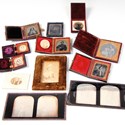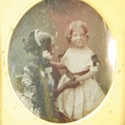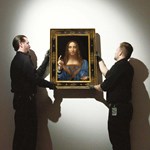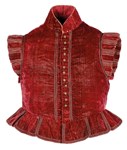Of course, it helps considerably if the attics in question are the top floors of country mansions such as Sizergh Castle in Cumbria – where fashion specialist Kerry Taylor identified a £60,000, 400-year-old tunic (see facing page) – or Thorne Court in Suffolk, source of much excitement at Lacy Scott & Knight (20% buyer’s premium) on December 9.
The Bury St Edmunds auction house has been selling all the contents, bar the pictures, from nearby Thorne Court with steady success, but a collection of unregarded daguerreotypes will be the lasting talking point.
Unknown to LSK, the mansion had belonged to Edith Methold, daughter of Dr Alfred Swaine Taylor (1806-80), the renowned ‘father of forensic medicine’ and a pioneer supporter of early photography.
The information came to light following a general sale the previous Saturday when bids on most lots, unestimated in the catalogue, rarely exceeded two-figure sums.
One, however, described as ‘a large quantity of unframed pictures and prints, to include etchings, engravings, photographs, monochrome copies etc’ took £4700.
The director-general of The Royal Photographic Society, Dr Michael Pritchard (the photographic specialist at Christie’s from 1986- 2007), told fellow members of the British Photographic History society that one item in the lot had been captioned King’s College Chapel, Cambridge, 26 July, 1839 – just months after Fox Talbot’s announcement of his ‘photogenic drawing process’ in January of that year.
Dr Pritchard’s mention of the upcoming daguerreotypes, including portraits by the pioneering John Jabez Mayall, later to be Queen Victoria’s choice of photographer, added to the interest shown by photography enthusiasts. Auctioneer Edward Crichton was aware that printed estimates would be exceeded again and, of course, they were.
Little Edith
First up was a lot comprising a 3in x 2½in (7.5 x 6cm) three-quarter portrait in a fitted leather case annotated Edith C Taylor, aged 3 years, taken by Mayall, 1847, along with other annotated Victorian daguerreotypes, ambrotypes and photographic portraits.
Little Edith and another cabinet portrait were overpainted and most of the photographs had some fading and losses to the edges, but the lot took a quadruple-estimate £650.
Next, five hand-coloured daguerreotypes including one with a lock of hair inscribed to the fitted case Mrs Harris, aunt of D.A.S. Taylor, died 1863 went at 30 times the mid-estimate, selling at £1900.
Bigger money came for a bundle which included a 4¾in x 3¾in (12 x 9.5cm) hand-coloured daguerreotype three-quarter length portrait of Swaine Taylor himself.
Taken by noted London photographer JC Barrable, it had a hand-written label to verso of the fitted leather case: Alfred Swayne [sic] Taylor 1859. Among the four other portraits was one of Edith Taylor and her mother, Caroline, taken in 1847.
Against a £50-80 estimate, the lot sold at £5400.
Victorian portraits
The top lot comprised 12 daguerreotypes including two Victorian portraits in velvet-lined gutta percha cases in the form of books and two stereoscopic daguerreotypes of Edith – catalogued as grubby otherwise good – labelled to verso for Mayall. Estimated at £80-120, it sold at £6000.
With a collective top estimate of £430 the photographs totalled a premium-inclusive £17,298.
A rueful Dr Pritchard observed: “My own bids, which had been left online as I was attending the French early paper negatives conference in Paris, were exceeded very easily. The buyer at this stage is unknown but had an agent bidding in the room on the day.”




















